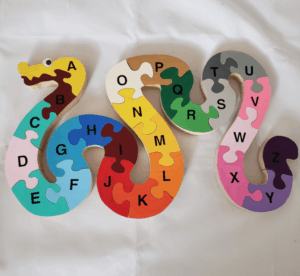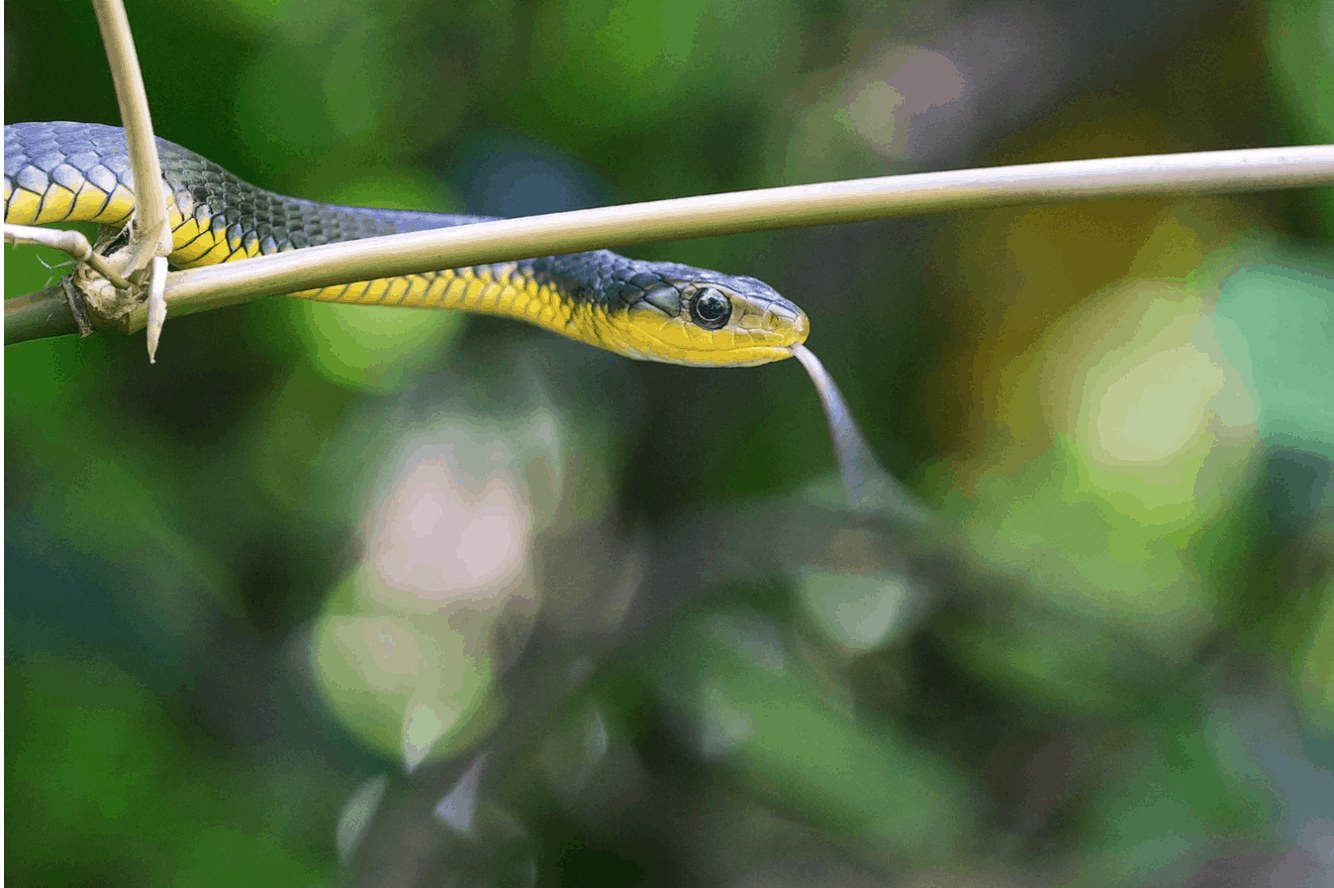Admittedly I didn’t know much about snakes and the many species we discover while hiking until my middle son became obsessed with herpetology. Learning about snakes is probably something most of us should know more about! Below are some tips for teaching kids to identify snakes when hiking.

Unless you’ve stumbled across a snake nest or surprised a snake in the brush, many snakes are not aggressive if you’re just observing them from a safe distance. (kind of like alligators!) This salt dough snake sensory activity is a GREAT way to help kids identify snake species at home!

Venomous vs. Poisonous – You may have heard people talk about poisonous snakes but there is no such thing. Poisonous infers that if you ingest it you will be poisoned. Snakes (some) secret venom thus are venomous. A slight semantic that bothers some people, but important to note the difference nonetheless!
**NUMBER ONE RULE**:
NEVER touch a snake that you cannot 100% identify. There are MANY “look-alike” snakes that may or may not be venomous or mimic another variety of snake so unless you are absolutely 100% certain without a shadow of a doubt what species of snake you are dealing with then please do not touch it.
That’s my #1 rule for my kids. If there’s any hesitation or (well it looks like a….) then my answer is no – don’t touch it! My number 2 rule is that we are not allowed to have any pets in the house that can kill you! Haha! Seriously though, we are strongly adamant about not touching snakes we don’t know about – and for good reason!
OK, now that we have that (obvious) disclosure out of the way, let’s talk about teaching kids to identify snakes when hiking. My son likes to go herping (looking for reptiles & amphibians) while we hike so as you can imagine we’ve come across a variety of snakes.

Tips for Teaching Kids to Identify Snakes:
- Buy an identification guide for the field. There are numerous books, laminated folded guides, and other guides by region, state, species, etc. These are great for identifying snakes while you’re out hiking, but don’t rely on the fact that the one guide has every snake in that habitat. This is when I go back to my “don’t touch it” rule if you don’t know for 100% fact what it is. I highly recommend purchasing a region specific guide.
- Study and identify the venomous snakes first. I have found that learning to correctly identify your area’s venomous snakes first will give you the upper hand in safety if you come across a snake while hiking. While you may not be able to identify it right away, if you can confidently dismiss the fact that it might be venomous it can be to your benefit in the even of a bite.
- Watch videos on specific and regional snake species! The internet is your friend here! Search for videos of specific snake species in your area. The more you can see a snake up close the more you will learn to immediately recognize it in the wild. Also look for herping videos in your state!
- Visit a reptile expo and/or exotic pet store! Although you may not necessarily see all the snakes that live in your area, going to a reptile expo or specialty exotic pet store, chances are you will see some. I’ve seen everything from rattlesnakes to corn snakes and garter snakes at expos.
- Learn how to identify snakes together. I definitely recommend parents take the time to learn more about snakes with their kids. Learning about snakes it actually quite interesting and it will not only give you a greater appreciation for these reptiles but may also come in handy someday! It will also give you more confidence if your kids are handling wild snakes!
- Join a Facebook group! There are Facebook groups for everything, including snakes! From snake identification groups (in case you or a pet gets bitten) to herping groups and groups for people with pet snakes, this is a great way to learn about snakes!
- Understand that it takes time! There are so many snake species out there – it will take time to learn them! This is not one of those hobbies you can launch full force into on day one. Take the time to confidently learn about snakes in your area. This is perhaps the hardest tips for kids to understand and practice!
Snake Gifts for Kids:
Click above to shop small business snake gifts for kids!

What to Do if you Get Bit by a Snake:
This is an answer that you don’t want to get wrong or have to Google while standing in the middle of a forest! Many of us grew up hearing things like “suck out the venom”, “cut the wound open to let the poison flow out”, etc. NO NO NO!
If you’re unsure what type of snake you were bitten by and are not 100% confident that it was not venomous – do NOT try to capture the snake! If you were able to capture a photo that’s fine but if not don’t worry! A hospital can find out the information they need to know without it!
If you are bitten by a snake do not move! (aside from getting to safety of course!) The additional movement of the area can increase blood flow further spreading the venom. Call an ambulance if you can’t get to the car with minimized movement to the area of the bite.
You will want to immobilize the area as much as possible. The more you move that area the more the venom will spread so stay calm and still as much as possible.
7 Fun Facts About Snakes:
There are over 3000 kinds of snakes in the world!
Snakes can eat prey 100% bigger than they are!
Snakes typically have six rows of teeth!
Snakes “smell” with their tongue!
Snakes “hear” by vibrations!
Some snakes grow up to 30 feet long and weight over 500 pounds!
Some snakes can fly! (well, it’s really more like gliding!)
Myths about Identifying Snakes:
All venomous snakes have cat eyes.
All snakes with a triangle shaped head are venomous.









Your information about being familiar with snakes in the region you are hiking is on point.
Please consider changing your medical advice on what to do if bitten. It is not advised to wrap the wound, as this could cause more tissue damage and the compress could actually “push” the venom outward from the wrapping. It us advised to elevate if possible, but not if it trumps getting off the trail and it help.
DR. Spencer Greene has the best plan and research in this field.
https://bayoucitymedicaltoxicology.com/snakebite-faq/